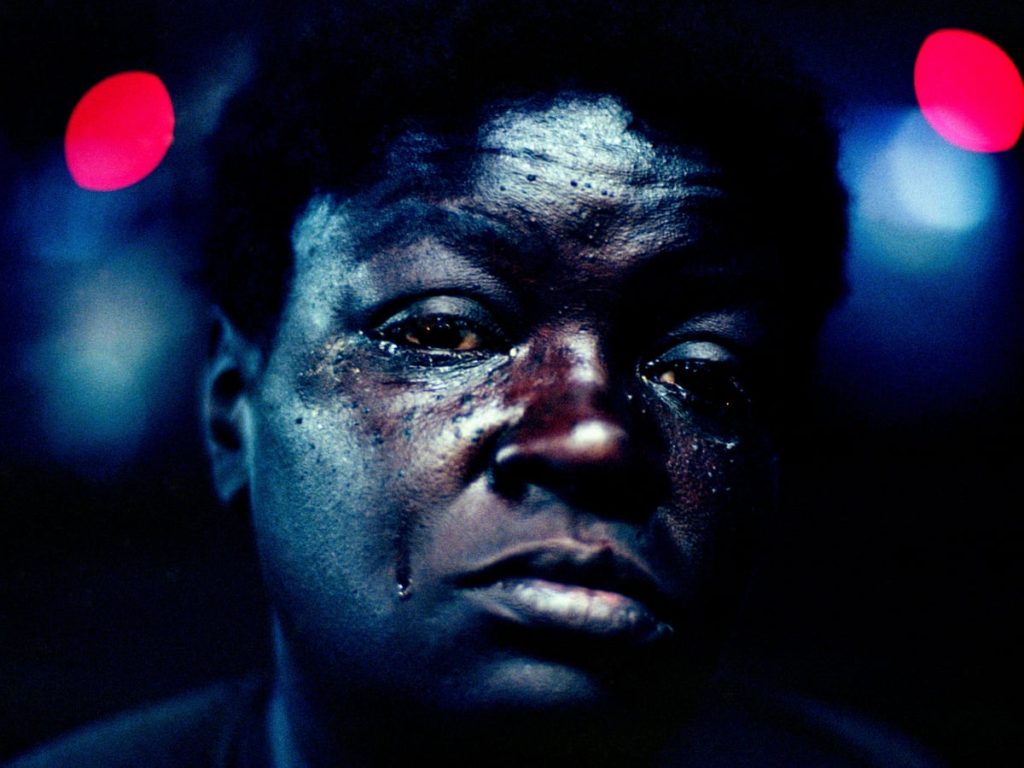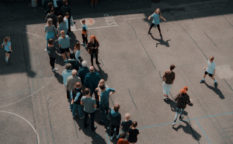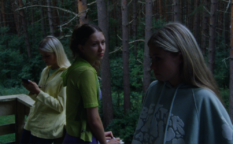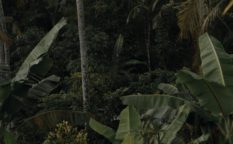Reflections 15: “This is my story, this is my song, praise in my saviour…”

The ebb and flow of the natural world is rhythmic yet complex; there are patterns, but their meanings are interpretive. Khalik Allah has an ability to visually express this sentiment, both questioning and skewering it. In his words, “I go beyond the form to the content.” It sounds simple enough, but as with everything Allah says and photographs, there is a needling that sticks around; there is something more to grapple with, to listen to, to touch.
It is joyous, challenging, and rare that a film like IWOW: I Walk on Water (2020) comes along. It is beautiful, frustrating, boring, sublime, and most of all, thorny. So much so, that it demands more temporal contemplation of its viewer than its lengthy runtime allows. At just under three-a-half hours, watching IWOW felt like a slog. Yet, I might never stop thinking it over, and can just barely skim the surface of what Allah is doing with the work. To engage fully is to go further – to view and to listen again, and then again, and again, yet there is a resistance in me to do so.
I am as interested in the work as I am in its affect: Allah is not making films for casual consumption, nor is he modest about who and what he is presenting. There is a sincerity even in his bullshit: he claims to be the son of God, but he is tripping on mushrooms when he says it. He offends his mother with this proclamation but it means more, and deeper than the false iconography of embodying a higher being. He doesn’t proselytise but he is preaching. It’s as if his practice of filmmaking is alchemical; his visual methodology touches the four core elements of our world; earth, air, fire, and water; allowing him to transcend its tangibility. What he is reaching for is God-like but not necessarily Godly. Allah offers us a haptic vision of his interior and exterior world, that we might have some kind of sensory understanding of who and what he’s looking at and talking about.
Aside from not being interested in recounting the plot or premise of a film, I wouldn’t dare try to surmise what IWOW is, or is not. Instead, allow me to say this: when we see water, lapping, it is not an entity that moves on its own; it is guided and touched by air, it is permeating yet stopped by earth, and it is, in its very existence, connected to or in conversation with its binary opposite, fire. The imagery of a dragonfly in extreme close-up is as significant as the subjects he shoots, just as the sounds of water are as revealing as the sounds of sirens cutting through personal testimony. Words espoused are like crashing waves– sometimes our ears welcome the gentle connection on offer, and sometimes it feels violent and destructive to receive.
Allah’s mother tells him, “You can be Jesus-like,” and he responds with yet more hyperbole, “I am a genius.” It would be too easy to dismiss this as narcissism – though that may also be at play. But this is where writing about films, and film criticism, becomes especially tricky, and important. Because context is everything. Sure, Allah says he is a genius, that he is Jesus, and that his subject, Frenchie, is God. But these are not the only things he says. He also says, “I don’t believe in white people,” (while we look at a black and white image of an art gallery and its sign that reads, ‘European Art’), “The shit that I teach you is because I’m trying to learn,” and “God only has one son and the son of man is racist.”
For a film as dense and thorny as Allah’s, which has led critics to write things like, “IWOW feels at points like the sort of artist’s work that might be at home in a gallery, and it invites a floating attention span that might make some viewers want to dip in and out,” (Jonathan Romney for Screen Daily); “Though Khalik’s intoxicating style is certainly accessible in short bursts, the idea of putting a novice in front of this almost-three-and-a-half-hour behemoth feels like they would be lost in a beautiful-looking inside joke,” (Vikram Murthi for RogerEbert.com); and “No one releases a three-hour-plus record of urban decay and the minutiae of their personal life without a touching faith in audience attention spans – or a complete indifference to them,” (Danny Leigh for Financial Times). This mode of writing is either patronising to the reader or a fair way of excusing high among the plastic arts to greet the status quo.
But as Allah is so deeply entangled in his own work – as problematic as my own style of first person, subjective-as-understanding-the-world critical writing – it is also a judgement on him and his pursuit of authenticity (which isn’t without its own set of deeply complicated ethical questions – concerning both filmmaking and being – I recommend reading Tom Seymour’s piece for The Art Newspaper for more on this). This question around critical writing is always present but feels especially relevant right now as spaces such as galleries (let alone cinemas) are not available for such films to screen in. I can’t help but wonder how differently IWOW might have affected me if I had have seen it in either a cinema or gallery context. In particular, it reminded me of my experience of Wang Bing’s Crude Oil (2008), at Courtisane film festival in 2018. Crude Oil is fourteen hours, documenting a workday at a remote Chinese oil field. Duration is crucial. But I didn’t watch it in its entirety. I saw maybe four hours – a little over a quarter of the film, and yet would say I have ‘seen’ it.
Unlike Netflix’s two-minute algorithm that records such viewing as data, we (culturally? artistically? collectively?) consider works of such duration, that ‘hang’ in the gallery, or spaces of similar setup, imagining already that the ‘viewer’ (visitor?) will not run the course, as a different offering to films that screen in a cinema, which ask (demand?) full and sole attention. Light in the dark is a very powerful thing.
My own desire (if not realisation) of seeing such durational works in their entirety and as intended – by whom? Wang Bing never imagined anyone would sit for 14 hours to watch Crude Oil, as he told us in Ghent, yet it was curated in such a way at this particular festival that one very nearly could, if not for toilet and other comfort breaks – this aside, exhibition matters, especially where criticism is concerned. Response, much like the art it works in relation to, has form as well as content.
This past week, unlike most of my contemporaries, I didn’t attend Berlinale, or Woche der Kritik (Berlin Critics’ Week). I did, however, read two reviews of IWOW that fundamentally misunderstand the medium they are discussing, one that calls it a “collage of video, celluloid and 16mm,” (Peter Bradshaw for The Guardian), and another that says it was “shot on a mixture of video, film and 16mm,” (Ed Potton for The Times). If 16mm is not film… and if Allah is using Celluloid (quick wiki for anyone wondering) then surely that ought to be the headline of the review, if not cultural breaking news.
The work of the critic, however, is equally as open to interpretation as art. Some might deride me for not attending an A-list festival from home, especially when I am so eager to watch Radu Jude’s new film. Others might consider it appalling that my column wears the inconsistency of its writer on its sleeve; it is sometimes late, its length varies, it’s often meandering and perhaps only occasionally insightful – certainly more curious than authorial. But, like Allah’s documentary (if we are sure we need such a term to delineate his work from other moving image modes), it is also the product of the practice of its maker.
Zarina Muhammad wondered about this in conversational style over at the white pube this week with her piece titled, “what do critics do?”, and though she outlines a number of seminal answers (10) the full answer is as endless as the number of people who consider themselves critics. For me, writing is a practice from which an alchemical process is possible; where patterns are present but affect is, even if meaning is not, interpretive. It is not the desire to sit outside or even in counter to the mainstream that makes the work along its fringes thorny. It is the sincere pursuit of sublimation and self that necessarily imbues and embodies it so.
















